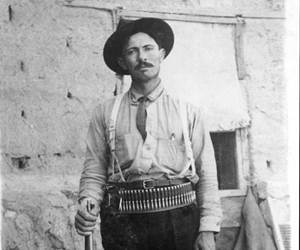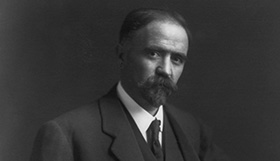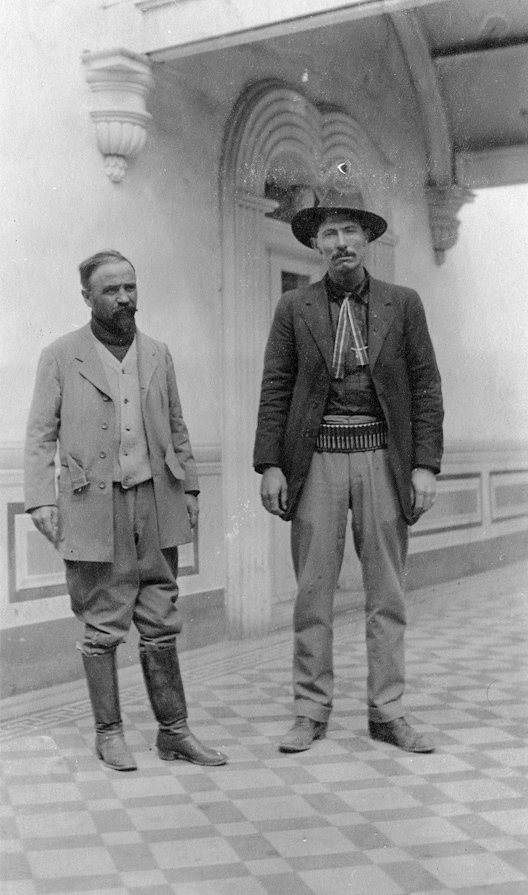![Source: Gen. Pascual Orozco. Prints and Photographs Division, Library of Congress. Reproduction Number: LC-USZ62-108596 (b&w film copy neg.) Call Number: BIOG FILE - Orozco, Gen. Pascual <item> [P&P], https://www.loc.gov/exhibits/mexican-revolution-and-the-united-states/rise-of-madero.html](https://refusingtoforget.org/wp-content/uploads/2023/08/Pascual-Orozco-LOC55.jpg)
#OTD in 1915, Mexican Revolutionary officer Pascual Orozco and four companions were chased by a posse of Texas Rangers, troops of the Thirteenth Cavalry, and local police after they were falsely accused of assaulting workers at a west Texas ranch.
A day before his death, Orozco apparently lost some horses and had either taken or bought three stolen horses, but the posse had no knowledge of the horse thefts or the identity of the men they were chasing until after the killings.

The next day, Orozco and his men, having ridden all night to outrun their pursuers and reach the border, were found sleeping in the High Lonesome Mountains near Van Horn, Culberson County, Texas, and were lynched by the posse.
Orozco and his men were not raiders but were men en route to join their rebel forces, who were waiting for them just across the river in Mexico. Only then, according to their official report, did the members of the posse realize that their quarry had not been common bandits.
The Orozco lynching quickly became controversial. The posse, fearing a grand jury investigation in El Paso, where Orozco had many supporters, quickly moved to cover up the facts to prevent further inquiry.
In a desperate move, the sheriff asked the Culberson County grand jury to indict him and the entire posse for the murders, and in a sham trial, the group was immediately acquitted.
The unscrupulous proceedings and coverup, involving a complicit judge and law officers, was an effort to shield the posse from further inquiry under the double jeopardy clause. The coverup succeeded.

Orozco rose to prominence when he led the revolutionary forces of Francisco I. Madero and defeated Mexican President Porfirio Díaz’s army in the May 1911 Battle of Ciudad Juárez. Díaz abdicated, ending a decades-long, corrupt dictatorship.

On May 25, an estimated 30,000 people greeted Orozco upon his arrival at Chihuahua City, and the provisional government appointed him commandant of the rurales in the state of Chihuahua. After this episode, his loyalty to the Madero government was always suspect.
Orozco was rumored to be involved with the anti-Madero plots of Bernardo Reyes and Emilio Vásquez Gómez in late 1911, although he repeatedly denied any involvement in these movements and played an active role in the successful January 1912 campaign against the Vasquistas.
In that same month, however, he clashed again with Madero, who reportedly asked him to put down the movement led by Emiliano Zapata in southern Mexico.
On March 3, 1912, Orozco announced his revolt against the Madero government, thereby lending the anti-Madero movement instant credibility. Many denounced him as an opportunistic traitor. He won some battles, but was eventually defeated by Gen. Victoriano Huerta.
Orozco traveled throughout the United States garnering support for a counterrevolution. On the morning of August 29, 1915, he and four companions, reportedly en route to a rendezvous with supporters at Bosque Bonito, in Mexico, rode up to the headquarters of a Hudspeth County ranch.
They ordered the cook to prepare a meal and shoe their horses, but their breakfast was interrupted when they saw the ranch owner and two of his men driving up in an automobile. The Mexicans fled on stolen horses, with the three in pursuit.
That night a posse of some fifteen men, including federal marshals, deputy sheriffs, and troops of the Thirteenth Cavalry, was organized to pursue them.
This thread is a part of the #OTD in Ranger history campaign that @Refusing2Forget is running this year. Follow this twitter handle or https://refusingtoforget.org/ranger-bicentennial-project/, and visit our website https://refusingtoforget.org to learn more.
Key sources for this entry are: Handbook of Texas, “Mexican revolutionary Orozco lynched 100 years ago,” El Paso Times and Lynching Pascual Orozco, a Mexican Revolutionary Hero and Paradox.
Refusing to Forget members are @ccarmonawriter @carmona2208 @acerift @soniahistoria @BenjaminHJohns1 @LeahLochoa @MonicaMnzMtz and @Alacranita, another co-founder is @GonzalesT956
@emmpask @sdcroll @HistoryBrian @LorienTinuviel @hangryhistorian, @ddsanchez432, @elprofeml, and @littlejohnjeff are other scholars working on this project.
